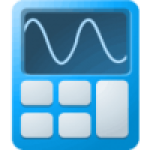I've been experimenting with JavaScript a bit lately and came up with a bit of code to make creating calculators for RF Mentor users quite a bit easier. Based on the fact that most of the online calculators share some common functionality as far as the website is concerned, I've created some base "formula" and "variable" objects to handle the creation of the input form and display tasks. As a result, creating a new calculator is a much simpler matter of defining the variables and writing a function for the calculation of the output value.





